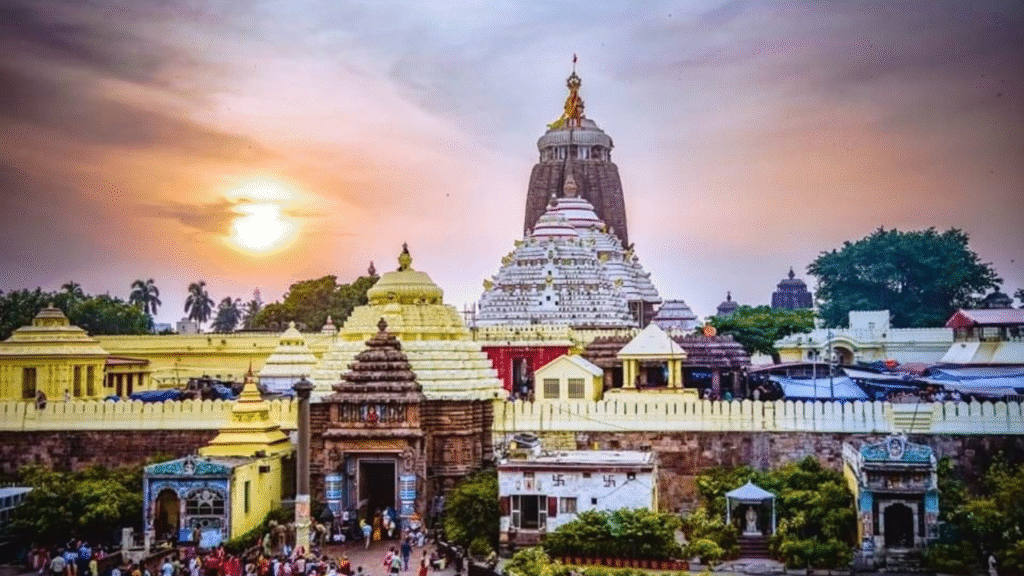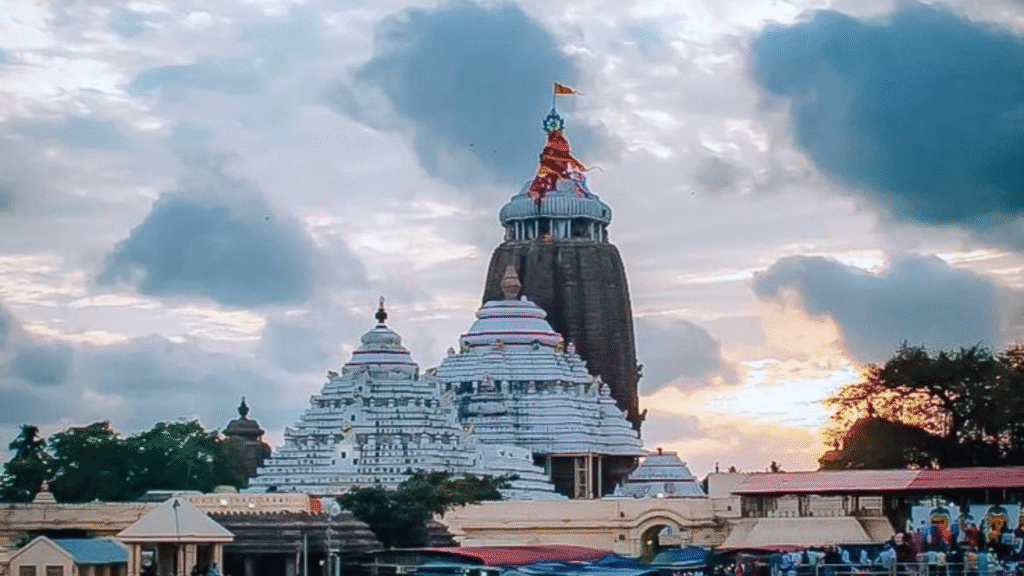
The 22 Stairs of Jagannath Temple – A Journey of Karma and Moksha
- Where Every Step is Sacred
- The Spiritual Significance of 22
- Climbing the Stairs: A Metaphor for Life’s Journey
- Tradition and Reverence
- The Stair Where Mahaprasad Is Shared
- The Path of Surrender
- The Deeper Symbol: Body, Mind & Soul
- Emotional Connection: Every Step is a Memory
- Walk Not With Feet, But With Faith
Where Every Step is Sacred
The 22 Stairs of Jagannath Temple. In the holy town of Puri, nestled along the eastern coast of India, stands the magnificent Jagannath Temple, one of the Char Dhams and a spiritual beacon for millions. Amidst its countless divine wonders lies a subtle yet profound path—22 stairs, known as the Baisi Pahacha, which lead to the inner sanctum. At first glance, they seem ordinary. But for a devotee, these steps are the bridge between this world and the eternal.
The Spiritual Significance of 22
The number 22 is not a random architectural choice; it is deeply symbolic. According to Jagannath culture and certain tantric traditions, the human soul is said to carry 22 kinds of internal impurities (doshas) that prevent liberation. Each stair, then, is not just a stone slab—it’s a chance to purify, to rise, and to release.
Climbing the Stairs: A Metaphor for Life’s Journey
As one climbs the Baisi Pahacha, it’s not just a physical ascent but a spiritual pilgrimage within:
-
The first few steps represent the chaos and illusions (Maya) of worldly life—desires, ego, greed.
-
The middle steps bring challenges, introspection, and the weight of karma—making you question, reflect, and repent.
-
The last few stairs represent surrender, awareness, and the shedding of all that binds you.
-
Finally, you stand at the threshold of divinity—where karma dissolves, and moksha awaits.

Tradition and Reverence
There is a deeply ingrained devotional etiquette associated with these stairs:
-
Devotees avoid stepping directly on the central path of the stairs, out of respect, often using the sides.
-
Some perform pranams (obeisance) on each step, especially during major festivals like Snana Purnima or Rath Yatra.
-
It is also believed that Lord Jagannath Himself walked these stairs during the installation of the deities in the sanctum centuries ago.
The Stair Where Mahaprasad Is Shared
One of the 22 stairs is especially sacred—this is where the Mahaprasad, the divine food of Jagannath, is shared. Known as Ananda Bazar, this is not just distribution; it’s participation in divinity. Food touched by the Lord is placed on one of these stairs, and devotees partake in it as a form of blessing, not just nourishment.
The Path of Surrender
According to ancient Odia scriptures and temple priests:
“Jebe prabesha kariba Baisi Pahacha re, sei dina karma chhadi moksha paiba re.”
(The day you enter through the 22 stairs with surrender in your heart, is the day you leave karma behind and reach liberation.)
It’s believed that just climbing the stairs with full devotion can free one from many lifetimes of sins.
The Deeper Symbol: Body, Mind & Soul
Some spiritual thinkers believe the 22 stairs also reflect:
-
5 steps for the Pancha Mahabhutas (Earth, Water, Fire, Air, Space)
-
5 steps for the Indriyas (Senses)
-
5 steps for the Karmendriyas (Organs of action)
-
7 steps representing the Chakras within the human body
Thus, the entire staircase is a miniature model of the human being—ascending it is like aligning yourself with cosmic consciousness.

Emotional Connection: Every Step is a Memory
For many devotees, the Baisi Pahacha is not just part of the temple—it’s a memory of their first darshan, their childhood visit, or the moment they prayed with tears in their eyes. The stone is worn, smoothened by the feet of crores of pilgrims over centuries—each step whispering stories of faith, surrender, and miracles.
Walk Not With Feet, But With Faith
So the next time you walk up the 22 stairs of Jagannath Temple, pause for a moment. Close your eyes. Offer your karma at the feet of the Lord. With every step, release your fears, your doubts, your pride.
Because at the top isn’t just a deity—it’s Jagannath, the eternal Lord who waits to receive you… not just into His temple, but into His heart.


Leave a reply here
Your email address will not be published. Required fields are marked *